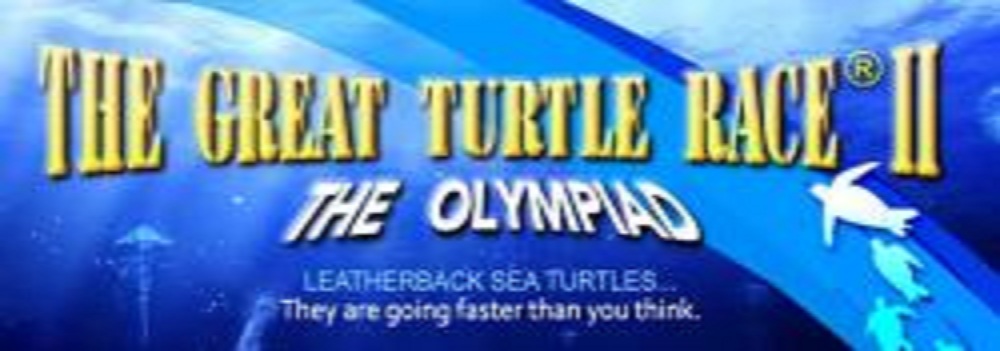Eleven Leatherback Turtles to Compete in the Great Turtle Race Across the Pacific Ocean
International Race to Save 100-million-year-old Species from Extinction goes to China
The Great Turtle Race II, a unique international sea turtle conservation event bringing together the Chinese Academy of Sciences, National Oceanic and Atmospheric Administration (NOAA) scientists, Drexel University and other academic institutions, and conservation organizations, will take place from June 2 to June 16 in a global bid to raise awareness and funds for the critically endangered leatherback turtle. The Great Turtle Race II will be the first large-scale outreach effort to the people of China by a US-based conservation NGO. A simultaneous, mandarin-language version of Great Turtle Race II website is expected to bring the race’s messages to approximately 100 million Chinese citizens.
Eleven institutions and sponsors from America, China, and Indonesia will compete in the Great Turtle Race II, including: the Chinese Academy of the Sciences, Drexel University, University of Papua, Indiana Purdue University, the Children and Youth Science and Technology Center of the China Association for Science and Technology, Kalamazoo College, Offield Center for Billfish, Bullis Charter School, Haddonfield High School, Hillside School, and World Wildlife Fund Indonesia. The Great Turtle Race II is organized by The Leatherback Trust, NOAA, Global Cause, Tagging of Pacific Pelagics, Sea Turtle Restoration Project, and Drexel University.
The eleven sponsored turtles have been equipped with satellite tags and are “racing” toward the International Dateline (or the middle of the Pacific Ocean) from nesting beaches in Indonesia and feeding areas along the U.S. West Coast. The leatherback is a 100 million-year-old massive sea turtle that outlived the dinosaurs but is now dangerously close to extinction. Leatherback numbers in the Pacific Ocean have decreased from about 115,000 two decades ago to fewer than 5,000 today. This online event will raise funds to protect leatherback turtle-nesting areas in Indonesia and raise awareness about what individuals can do—on both sides of the Pacific Ocean—to help protect sea turtles in our daily actions.
James Spotila, president of the Leatherback Trust and Drexel professor, said “This Olympic-like event joins scientists, conservationists and educators in China, Indonesia and the Unites States in an effort to inform children and adults about the turtles while they enjoy another exciting race. The school children of the United States and the school children of China will cheer on their turtles and, in doing so, promote friendship.”
Starting June 2nd, race fans will have a chance to choose a favorite turtle to cheer during the race at www.greatturtlerace.com. Throughout the race, viewers can follow each turtle’s journey across the Pacific and learn about the obstacles it will face along the way—fishing lines and nets, plastic bags that look like jellyfish (leatherbacks’ primary food source), and many other human-related hazards. Activities for fans include a chance to try to pick the winning turtle, an interactive animation of a leatherback’s life, opportunities to ask questions, and sea turtle educational curriculum for teachers.
“The Great Turtle Race is about sharing information on one of the most amazing inhabitants of our Ocean, a Volkswagen Beetle-sized turtle that has outlived the dinosaurs, with the public,” said Mike Milne of the Sea Turtle Restoration Project. “The race and the story it tells about leatherback sea turtles give people a tangible reason to care about the ocean.”
As the leatherbacks surface to breath every several minutes, satellite tags transmit data such as location and water temperature to satellites in space, which then transmit the data back down to computer servers in the U.S. This data is combined with remotely-sensed information about sea surface temperature, sea surface height, and more to build a comprehensive understanding of leatherbacks’ epic, trans-Pacific migrations. Scientists and managers will be able to use this information on oceanography, animal behaviors, and human pressures to develop innovative ways to conserve leatherbacks and other sea turtles.




